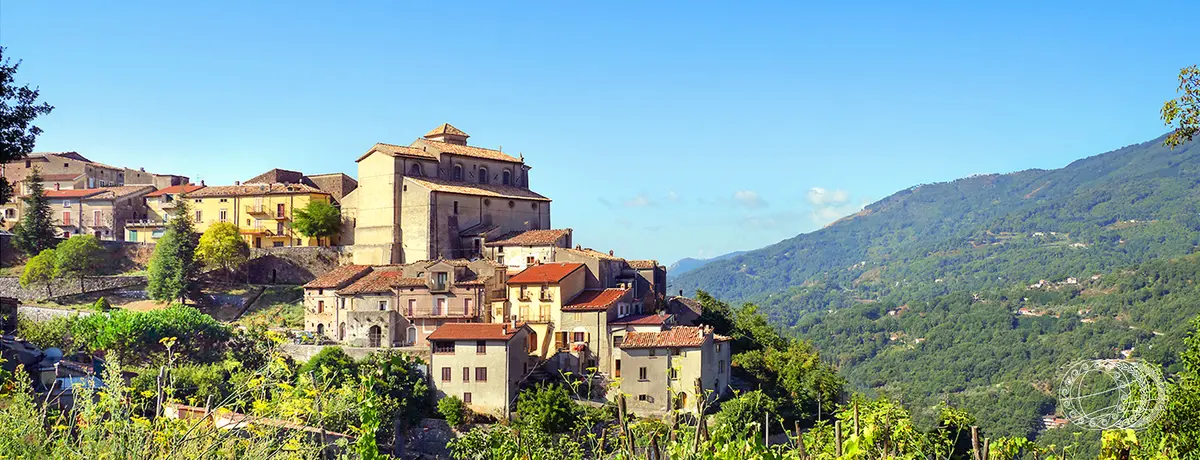Fiumefreddo Bruzio
Among "The Most Beautiful Villages in Italy", which fascinated the painter Salvatore Fiume
Historical centres
Castello della Valle, Fiumefreddo Bruzio - Regione Calabria
Visit the "slow village" of Fiumefreddo Bruzio in the province of Cosenza, one of "Italy's Most Beautiful Villages", and discover the numerous works of art left here by Sicilian painter Salvatore Fiume.
Salvatore Fiume, returning from his holidays in Sicily, stopped in Fiumefreddo Bruzio and was fascinated by the ruins of the Della Valle Castle, which he decided to fresco.
The village of Fiumefreddo Bruzio literally enchanted the Sicilian painter Salvatore Fiume, who, returning from a trip along State Road 18, was captivated by the strange coincidence of the same name and, in particular, by the Della Valle Castle (a Norman fortress dating back to 1054), so much so that he decided to stop and create a masterpiece of contemporary art among its ruins: 13 scenes known as Room of Eden (1975), followed by The Room of Desires (1996).
Over the years, Salvatore Fiume paid tribute to the village with many other works of contemporary art: the important fresco in the Church of San Rocco (18th century); The Surf Girl, a monumental fountain that is a hymn to women and the sea, in the centre of the splendid Largo Torretta, where the Town Hall (formerly the Convent of the Minims) and the clock tower from which the square takes its name are also located; The Wheel of Fortune, in the centre of Largo Rupe. The artist's house is located in the small square known as Largo Salvatore Fiume.
Continuing your walk through the streets of Fiumefreddo Bruzio, it is worth visiting the Mother Church of San Michele Arcangelo (1540), inside which you can admire famous paintings by Francesco Solimena and Giuseppe Pascaletti, the ancient churches of the Addolorata and Santa Chiara, and a series of noble palaces. Finally, the hamlet of Marina di Fiumefreddo Bruzio is perfect for summer holidays: beaches equipped for families, a beautiful promenade and the opportunity to go fishing, one of the main economic sources of the village since ancient times.
Useful information
What to know about Fiumefreddo Bruzio
Where to Sleep
There are 4 available accommodations.
Places
There are 14 places to visit.
Travel Ideas
There are 5 travel ideas.
Infopoint Fiumefreddo Bruzio
Fiumefreddo Bruzio
No result








